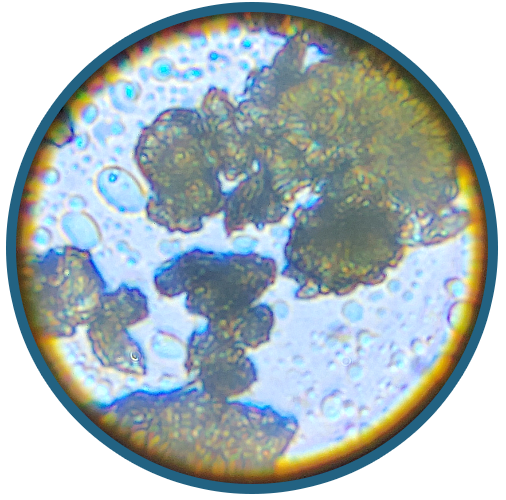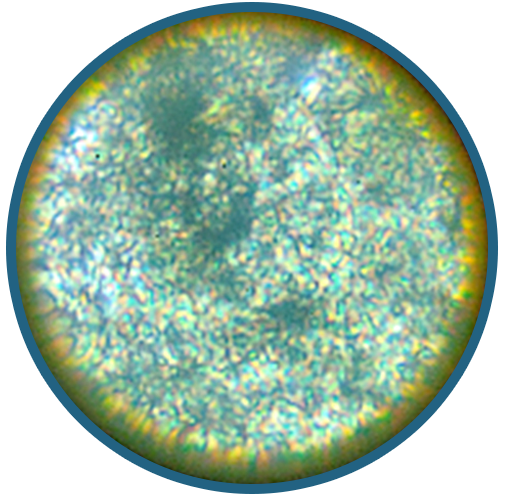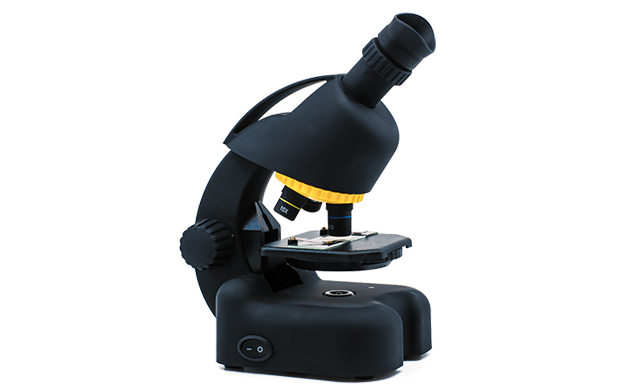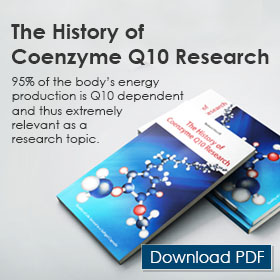The National Geographic microscope is a high quality microscope made by the Bresser Corporation. It is suitable for children and beginners. It has a single tube eyepiece and three objective lenses (4X, 10X and 40X.) The light source is battery-powered LED ensuring a good object illumination. It has a pinhole aperture wheel to adjust the light. The included smartphone holder is easy to mount and makes it easy to take photos of the examined objects
Along with the microscope comes various accessories which includes three prepared slides, eight microscope slides, two AA batteries, labels and cover plates, a microcut, a tweezer, a pipette, a small handheld magnifier, a measuring jug, a manual, and more.
Dimensions: 160x100x220 mm / Weight: 556 g
About Q10 microscopy
The National Geographic microscope can be used to test the quality of your Q10 preparation at home. You simply look for  crystals in the Q10 specimen. You can evaluate the probable absorbability and bio-availability of the Q10 you have bought by looking at the size and shape/form of the crystals in the specimen.
crystals in the Q10 specimen. You can evaluate the probable absorbability and bio-availability of the Q10 you have bought by looking at the size and shape/form of the crystals in the specimen.
We humans cannot absorb Q10 crystals in our small intestines. To become absorbable, the Q10 crystals have to be dissolved into single Q10 molecules.
Big chunky Q10 crystals will not dissolve sufficiently after ingestion. They will mostly be excreted.
Small, needle-shaped Q10 crystals, on the other hand, will melt to separate single Q10 molecules, which can be absorbed in the small intestine.
 One thing that could disrupt or inhibit your evaluation of the Q10 preparation that you have purchased would be relatively large quantities of additive, e.g. vitamins, minerals, or herbs. Therefore the test is best done using a pure Q10 product.
One thing that could disrupt or inhibit your evaluation of the Q10 preparation that you have purchased would be relatively large quantities of additive, e.g. vitamins, minerals, or herbs. Therefore the test is best done using a pure Q10 product.
Click here for more information on how to use your National Geographic microscope for evaluating your Q10-preparation.


 crystals in the Q10 specimen. You can evaluate the probable absorbability and bio-availability of the Q10 you have bought by looking at the size and shape/form of the crystals in the specimen.
crystals in the Q10 specimen. You can evaluate the probable absorbability and bio-availability of the Q10 you have bought by looking at the size and shape/form of the crystals in the specimen. One thing that could disrupt or inhibit your evaluation of the Q10 preparation that you have purchased would be relatively large quantities of additive, e.g. vitamins, minerals, or herbs. Therefore the test is best done using a pure Q10 product.
One thing that could disrupt or inhibit your evaluation of the Q10 preparation that you have purchased would be relatively large quantities of additive, e.g. vitamins, minerals, or herbs. Therefore the test is best done using a pure Q10 product.
